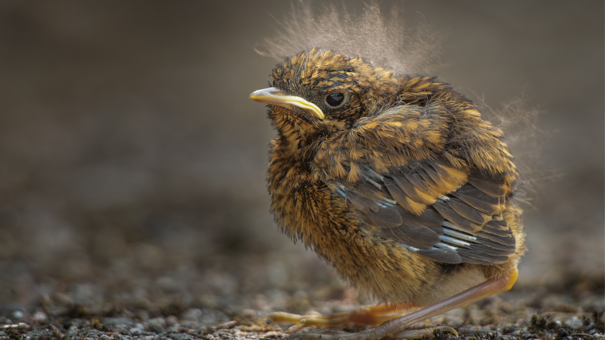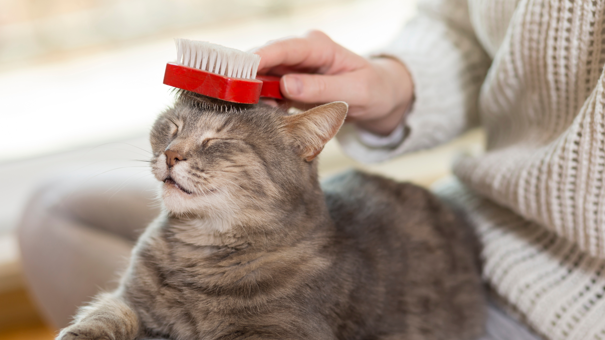We rarely consider the environmental impact of owning a pet. Although some impacts - in particular the hunting and killing of wild animals and birds - are obvious and widely recognized, others could be far more damaging and are worthy of our consideration.
In this article, PeCAN volunteer Sarah Garcia focuses on the impact of flea and tick treatments, and highlights some alternative options.
An increasing body of scientific research is showing that chemicals used in standard flea and tick treatments are polluting our waterways and having a drastic effect on wildlife in the UK. Concerns are also rising about the possible health effects of these toxic pesticides on both animal and human health.
Flea and tick treatments contain highly toxic pesticides which have been banned for agricultural use on crops owing to evidence that they impact bees and other pollinating insects vital for our food supply. The two main pesticides used in the treatments are the neonicotinoid imidacloprid and the related chemical fipronil. Both are powerful killers of invertebrates such as insects.
One monthly flea treatment for a large dog contains enough imidacloprid to kill 25 million bees
In aquatic ecosystems, insect larvae are particularly at risk, such as those of mayfly and dragonfly. These species, among others, are important food for fish, birds, and bats, potentially causing knock-on effects on the wider ecosystem. Environment Agency data found fipronil residue in 98% of river and lake samples, and traces of imidacloprid in 66% of all samples.
There are an estimated 25 million cats and dogs in the UK, many of which are treated with parasiticides on a monthly basis. Once applied, the products are absorbed by the body, remaining in the skin, hair, and excretions. Direct contamination of rivers is caused by dogs swimming in rivers and lakes, but new research is showing that the majority reaches natural waterways through household wastewater. The main routes are believed to be through owners washing their hands after treating or stroking treated pets, and runoff from washing their pets, pet bedding and clothes.

Songbirds In Danger
A study funded by the charity SongBird Survival has found that songbird chicks are being killed by high levels of pesticides in the pet fur used by their parents to line their nests.
Sue Morgan, the chief executive of SongBird Survival, said: “We are a nation of pet lovers and bird lovers, and it is extremely concerning to see the alarming levels of toxic pesticides in bird nests from veterinary drugs. Pet owners will be upset to hear that in trying to do the right thing to support their pets with fleas and ticks, they could be harming our ecosystem, resulting in dead newborn chicks and unhatched eggs. As pet owners, we need to have confidence that we are keeping our pets well, without causing devastating impacts on our wildlife”.
In January 2025 the University of Sussex published a paper investigating the nests of blue and great tits, testing for a number of pesticides. This research showed that 100% of nests were contaminated with pesticides commonly used in flea and tick treatments for domestic pets. Nests that had a higher concentration of pesticides also had a higher number of unhatched eggs and dead chicks.

Health Risks To Pets
Even when all the instructions are followed correctly, the reality is that we know almost nothing about the possible long term impact on our pets of being treated regularly and over long periods of time with parasiticides.
Many popular flea and tick products contain permethrin, an insecticide in the pyrethroids family that has been proven to be carcinogenic and cause liver tumors and lung cancer in animals. Fipronil has been shown to cause benign and malignant tumors during laboratory testing.
Potential Health Risks To Humans
The chemicals in flea and tick treatments may also be affecting the health of people living in the same household as treated animals. Fipronil and permethrin – pesticide active substances commonly found in tick and flea treatments – have both been found to have links to cancer and are also suspected endocrine disruptors, which means they can interfere with hormone systems, causing an array of health problems.
Pet owners using the flea treatments risk contaminating their hands with fipronil and imidacloprid for at least 28 days after the treatment has been applied, according to research by the University of Sussex and Imperial College London.
Vet guidelines advise that pet owners should not touch their animals until the application site is dry, but the Sussex-Imperial research, which was published in the journal Science of the Total Environment, shows that pollution lasts for the product’s entire duration of action.
With the majority of pets in regular physical contact with their families, and many allowed to spend time on carpets, sofas and beds, it is unlikely that external tick and flea treatments are contained to the target animal. This is especially true when there are young children in the home who tend to touch pets’ bedding, toys or clothes. Children are also more vulnerable to the effects of pesticides for a range of reasons, including the fact that the systems their bodies used to deal with toxins are not as advanced.
Don’t despair, pet owners can help change all of this, and here’s how:
Stop the routine monthly use of spot-on flea and tick treatments and use non chemical methods
It’s standard practise for most vets to recommend monthly treatment for pets, but there is very little data confirming that regular monthly treatments are medically necessary. After all, we don’t treat our children for nits every month regardless of whether or not they actually have nits.

Alternatives To Try
- Groom pets regularly, with a fine toothed comb, to keep their hair healthy, show if they have fleas and help remove eggs and larva from their hair
- Check dogs for ticks after walks and use a tick hook if necessary
- Use a natural herbal pet shampoo containing neem oil, rosemary or lavender, which have natural flea repelling properties
- Use flea collars containing natural ingredients such as oils like eucalyptus or cedarwood
- Hoover and clean your house regularly and wash pet bedding in hot water to help prevent infestations
Switch to tablets or injections rather than topical treatment, if you need to treat an outbreak of fleas
- Tablets do not leave pesticide residue on your pet’s hair
- Injections don’t use insecticides, but work by blocking flea eggs from developing into adults

Spread The Word
- Explain the problem to other dog and cat owners you meet. Research shows that the majority of pet owners will change what they do once they know what’s going on
- Tell your dog groomer/walker about the issue and encourage them to talk about it to other clients. As dog lovers, they’ll probably be as concerned as you are
- Tell your vet why you’ve stopped using monthly treatments and ask them if they’re aware of the research about the harmful effects of the pesticides they contain
- Write to your MP, asking them to call on the Government to ban the use of harmful pesticides in flea and tick treatments
